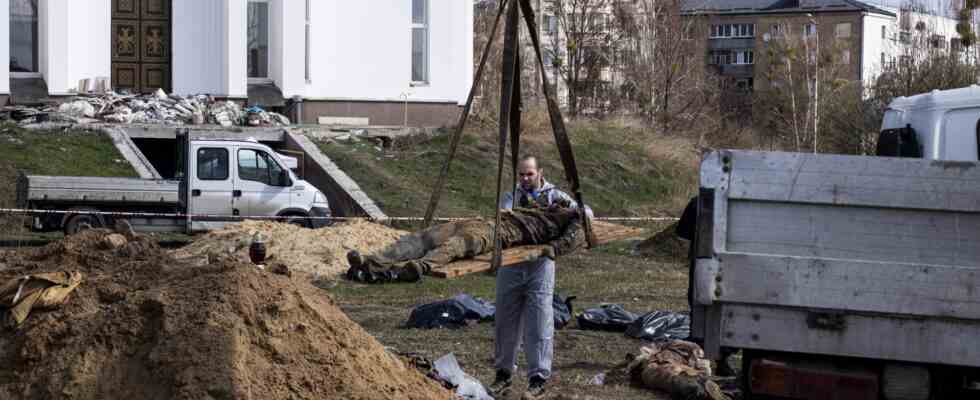Status: 03.01.2023 07:36
In April 2022, 460 dead Ukrainians were discovered in the Kiev suburb – apparently murdered by Russian occupiers. After months of research, the “New York Times” claims to have determined which regiment is responsible.
A survivor’s shaky cellphone video after Russian troops pulled out of Bucha. He counts four, five, six bodies as he walks down Jablonska Street. “This really is Death Road,” he says. The New York Times film begins with this scene.
It is a shocking half-hour in which the journalists document the results of their eight-month research in Bucha. Pleasantly simple. Without reporters in the picture, who can be filmed at their work. Without pseudo-investigative inquiries. Without reenactments on the phone or in front of open laptops. The focus is on the story, not the researchers.
“Improvised Morgues”
The story began in April. The journalist Yousur Al-Hlou was actually on her way back to the USA. She and two colleagues had been reporting from Kyiv for the New York Times since January. Then came the news from Bucha: “The next day we were in Bucha ourselves and it was pretty shocking there,” says Al-Hlou.
She has reported other conflicts in the past. “But I’ve never seen such a large number of corpses, on the street, in cars, in improvised morgues. Such a large number of dead in such a small space.”
Russia denied responsibility
According to Ukrainian sources, more than 460 bodies were found in the Kiev suburb after the Russian troops withdrew. The atrocities against the civilian population had caused horror around the world. Russia has denied responsibility for the crimes, claiming the footage of the dead was fabricated.
“That same evening we spoke to our editors in New York and decided together: we need more time here,” says Al-Hlou. It wasn’t just a breaking news story. “We wanted to find out: Who are these people whose bodies have been lying on the street for weeks. What happened to them? And who killed them?”
Witness statements and drone footage
That was the beginning of an eight-month research. Together with other colleagues, the video journalist spoke to survivors and documented their statements. Editors in New York and Washington viewed footage from surveillance cameras in Bucha and drone footage from the Ukrainian army, and evaluated government documents.
“And so we were able to identify a specific regiment,” says Al-Hlou. Her team has videos of the soldiers committing murders several times. “So we can say: not only do we think it’s probable, we have evidence that a particular unit – the 234th Airborne Division – is actually responsible for these killings that we’ve been investigating along Jabloska Street.”
Soldiers used the victims’ cell phones
Although the soldiers apparently tried to paint over the corresponding insignia on their vehicles, parts of it can still be seen on the surveillance videos. The soldiers also left behind some documents. They radio superiors with code names that indicate the unit – and that the crimes were committed systematically and ordered by commanders.
“But the crown jewels, the unique part of our work, are the soldiers’ phone logs,” says the journalist. Her team was able to use these to prove that cell phones belonging to six civilian victims were used by Russian soldiers. “We were able to identify these soldiers and then found evidence online that they belong to this unit: posts on social media, photos of badges or flags.”
Your team spoke to relatives. “While we cannot say that these soldiers committed the murders, they were in possession of the victims’ phones a few hours after they were killed and were therefore close to the crime scene.”
“Incontrovertible Evidence”
It is quite possible that these findings can make an important contribution to the ongoing international investigations into alleged war crimes in Ukraine. Especially because the journalists managed for the first time to identify a specific regiment and individual soldiers. “We will not press charges or bring the evidence to court. We are journalists,” Al-Hlou clarifies.
But she hopes that someone who is interested will use her material. “My family is Syrian-American. The war in Syria is considered the first to be documented on social media. We can no longer say as a society or as a world: we didn’t know about it. This also applies to the war in Ukraine. ” Everything is documented. “We have published irrefutable evidence with our story. This information is available to anyone who wishes to use it for a higher purpose.”
Eight months of research by the New York Times: documents of the terror from Bucha
Peter Mücke, ARD New York, 01/03/2023 06:59 a.m

